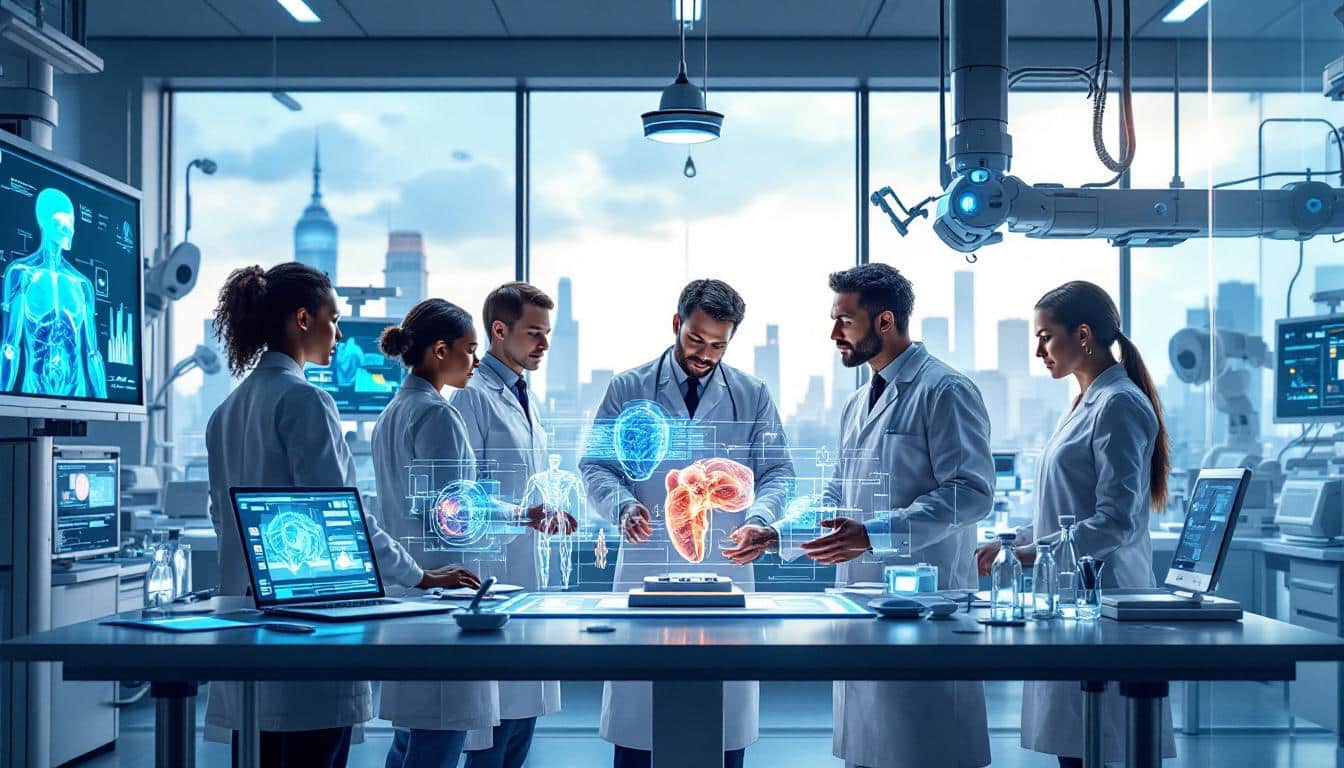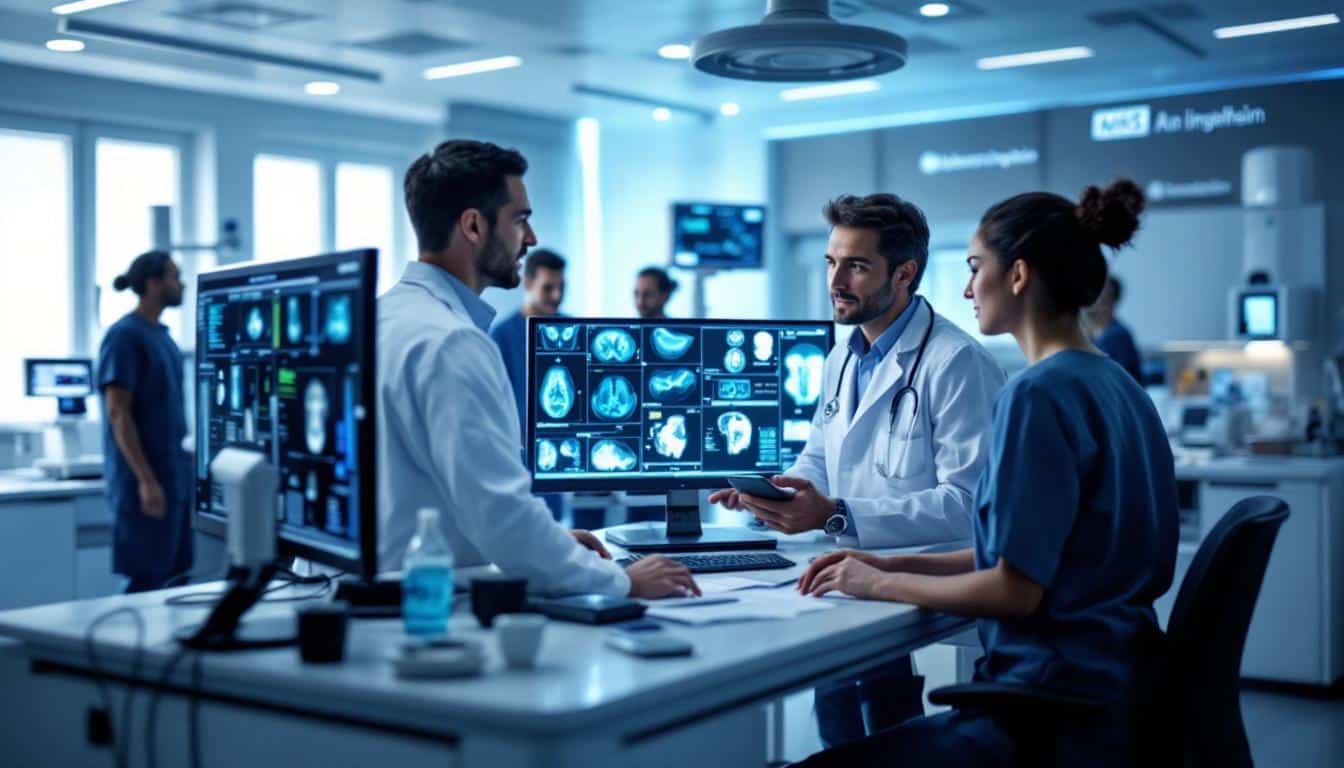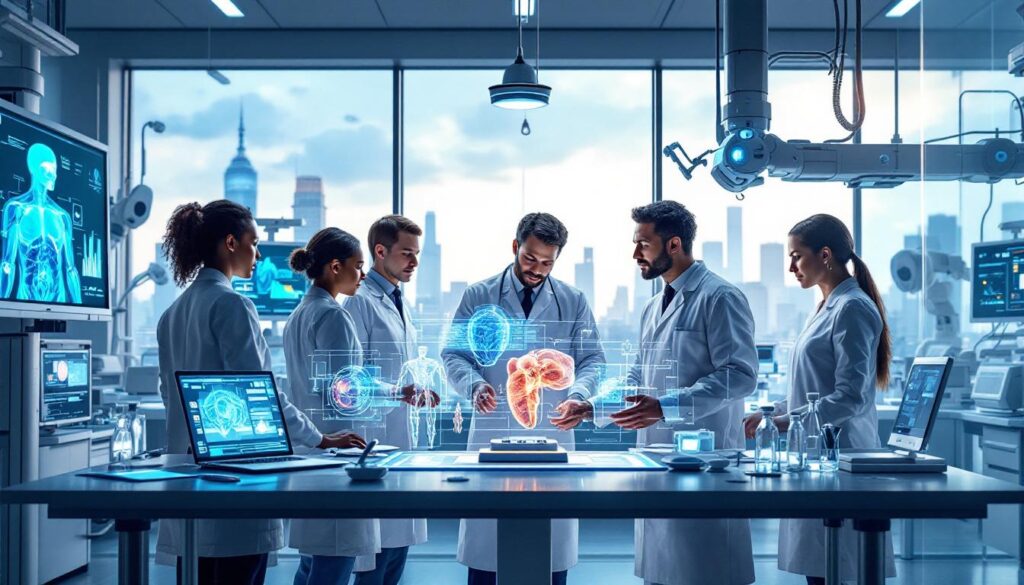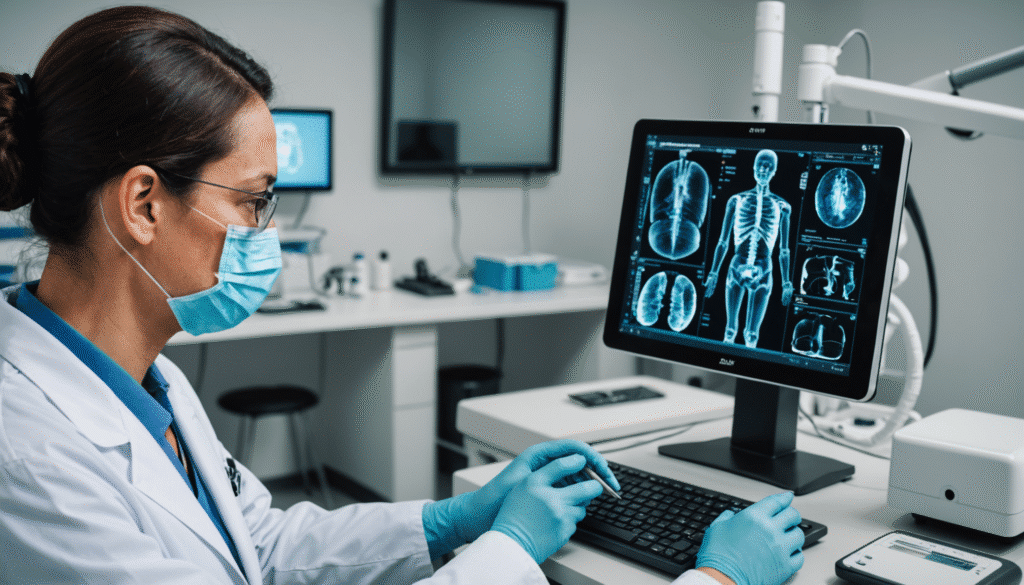Passionate about medical advances, I dedicate my research to innovation in the service of health.My commitment aims to develop innovative solutions to improve patient well-being.Collaborating with industry professionals enriches my discoveries and stimulates new ideas.
The digital evolution of healthcare institutions is a fascinating adventure that profoundly transforms patient care. The Semarang Medical Center (SMC) Telogorejo, located in Central Java, Indonesia, perfectly embodies this transformation with its successful achievement of Stage 6 of the HIMSS EMRAM electronic medical record adoption model. This success reflects the hospital’s commitment to integrating advanced technologies to optimize its services.
It all began in 2017 with the launch of the mobile application MySMC, providing patients easy access to hospital services and health information. This initiative not only improved communication between the hospital and its patients but also laid the groundwork for further digital transformation. In 2019, the introduction of the Electronic Medical Record (EMR) system centralized patient data, including laboratory results, radiology reports, and treatment history.
The following year, in 2020, the global pandemic catalyzed the adoption of digital solutions. Under the leadership of Dr. Alice Sutedjo Lisa, CEO of SMC Telogorejo, the hospital implemented teleconsultation and a 24/7 multichannel contact center, integrating a virtual chatbot to assist elderly patients. These innovations allowed for a response to a growing demand for care while minimizing the constraints related to space and time.
In 2021, the integration of Artificial Intelligence (AI) and Big Data strengthened the hospital’s analytical capabilities, while connecting IoT medical devices to the hospital information system (HIS) facilitated the development of a clinical decision support system. This step allowed for real-time entry of vital data, thus optimizing medication and blood transfusion processes.
The year 2023 marked a new milestone with the linking of the MySMC database to the Indonesian national health registry, in accordance with state regulations. Additionally, subscribing to resources such as UpToDate and Lexicomp has enhanced the hospital’s clinical decision support capabilities. Collaboration with HIMSS then enabled SMC Telogorejo to comply with EMRAM standards of Stage 5, thereby aligning its digital transformation objectives with rigorous global standards.
The challenges encountered, such as change management and the lack of technological skills among staff, have been overcome with the support of all stakeholders. Significant investments in training and education have engaged clinicians and demonstrated that digital tools are assets rather than constraints. This collaborative approach has been essential for improving service quality and ensuring patient safety.
More than simply digitizing, SMC Telogorejo is now considering an evaluation via the HIMSS Digital Health Indicators and is preparing its system for remote patient monitoring, thereby adding further value to the patient experience. Thanks to these initiatives, the hospital has seen its Google rating reach 4.9 and has observed a continuous improvement in clinician satisfaction and quality indicators.
#>

“`html
The digital transformation of the SMC Telogorejo hospital embodies a major advance in the healthcare sector in Indonesia. Achieving stage 6 of EMRAM (Electronic Medical Record Adoption Model) testifies to the exceptional maturity of the institution in managing electronic medical records. This success translates into a significant improvement in patient satisfaction, thanks to targeted technological innovations and a patient-centered approach.
How did SMC Telogorejo begin its digital transformation?
The journey of SMC Telogorejo towards stage 6 of EMRAM began in 2017 with the launch of its mobile application, MySMC. This initial initiative aimed to provide patients easy access to hospital services and health information, while improving communication between the hospital and its patients. The application already allowed patients to book consultations online, make payments, and track their position in the waiting line, thus reducing waiting times and optimizing scheduling processes.
In 2019, the hospital integrated a sophisticated EMR system, consolidating patient data, including medical records, laboratory results, radiology reports, and treatment histories. This integration allowed for better care coordination and more informed medical decision-making, particularly with the addition of electronic prescriptions featuring alerts for allergies, maximum doses, and drug interactions.
What are the benefits of EMRAM stage 6 for patients?
Obtaining stage 6 of EMRAM has brought numerous advantages to patients of SMC Telogorejo. One of the primary benefits lies in the improvement of patient safety. With an advanced EMR system, medication errors have been reduced due to integrated alerts, ensuring safe administration of treatments. Moreover, the integration of real-time data via IoT has enabled constant monitoring of vital signs, facilitating rapid intervention when needed.
Furthermore, the hospital has developed a clinical decision support system based on artificial intelligence and big data. This system helps doctors make more accurate and personalized treatment decisions, resulting in improved clinical outcomes and increased patient satisfaction. The connection with the Indonesian national health database has also enhanced the consistency and reliability of available medical information.
What challenges did SMC Telogorejo face during this transformation?
The transition to stage 6 of EMRAM was not without challenges for SMC Telogorejo. One of the main obstacles was change management within the organization. Staff, particularly clinicians, had to adapt to new technologies and digital working methods. To overcome this challenge, the hospital invested in training and education programs, ensuring that staff understood and adopted digital tools without feeling overwhelmed.
Another major challenge was the integration and interoperability of various IT systems. Close collaboration with IT technology vendors and service providers was essential to ensure a smooth integration of applications such as LIS, RIS, PACS, ICCA, SATUSEHAT, and JKN Mobile. This integration created a coherent IT ecosystem, ensuring that data flowed freely and securely between different hospital services.
How did SMC Telogorejo use AI and big data to improve care?
The introduction of artificial intelligence and big data was a crucial step in SMC Telogorejo‘s progress towards stage 6 of EMRAM. In 2021, the hospital began using these technologies for business data analysis and to develop a clinical decision support system. This allowed for quicker and more accurate interpretation of medical data, thus facilitating more effective diagnoses and treatments.
The integration of IoT medical devices with the HIS system also played a pivotal role. For example, real-time monitoring of vital signs enables proactive care management, reducing the risk of serious complications. Furthermore, the use of AI to analyze health data has allowed for the personalization of treatment plans, thus improving outcomes for patients.
What competitive advantages does SMC Telogorejo gain from its EMRAM stage 6?
Achieving stage 6 of EMRAM provides SMC Telogorejo with a significant competitive advantage in the healthcare market in Indonesia. This certification demonstrates the hospital’s commitment to quality of care and patient satisfaction. By adhering to HIMSS’s stringent standards, the hospital ensures that its practices align with international best practices, thus strengthening patient and partner confidence.
Moreover, interconnecting with resources such as UpToDate and Lexicomp allows clinicians to access up-to-date medical information, further enhancing the quality of care. This availability of cutting-edge information enables SMC Telogorejo to position itself as a leader in medical innovation, thus attracting patients seeking high-quality care.
What is SMC Telogorejo’s future vision after EMRAM 6?
With the achievement of stage 6 of EMRAM, SMC Telogorejo does not stop there. The hospital plans to undergo evaluation of the HIMSS digital health indicator, aiming to continue its quest for excellence. One of the key future initiatives is the implementation of patient remote monitoring, providing value-added care and further improving the patient experience. This approach will enable patients to receive continuous and personalized care, even from a distance, thereby reducing the need for physical visits and optimizing medical resources.
Additionally, SMC Telogorejo plans to further leverage emerging technologies such as 3D imaging and image-guided surgery systems, in order to continue improving clinical outcomes and operational efficiency. Continuous collaboration with key players in medtech innovation, such as Zthera A16, will allow the hospital to remain at the forefront of medical advancements.
How does SMC Telogorejo engage its staff in digital transformation?
Staff engagement has been a crucial element in the success of SMC Telogorejo‘s digital transformation. To ensure smooth adoption of new technologies, the hospital has established continuous training and awareness programs. Involving clinicians and listening to their feedback has been essential for adapting digital tools to their specific needs, thereby making the working process more efficient and less burdensome.
Management has also emphasized the importance of demonstrating that digital tools are not an additional burden, but rather instruments designed to facilitate healthcare professionals’ work and improve patient care. This collaborative approach has strengthened internal cohesion and helped create a positive work environment, where each staff member feels valued and invested in the shared mission of continuously improving care quality.
What concrete achievements has SMC Telogorejo accomplished through EMRAM 6?
The achievements of SMC Telogorejo through the adoption of stage 6 of EMRAM are numerous and significant. The MySMC application continues to evolve, now offering advanced features such as online booking, digital payments, and real-time queue monitoring. These innovations have reduced wait times, improved resource management, and optimized the overall patient experience.
Moreover, the integration of IoT devices with the HIS system has allowed for continuous and accurate monitoring of patients’ vital signs, facilitating rapid response to changes in their health status. This proactive monitoring capability has not only improved patient safety but has also strengthened patients’ trust in the hospital.
Improvements in clinical decision support, thanks to AI and big data, have led to more accurate diagnoses and personalized treatments, thereby increasing care efficiency and patient satisfaction. Additionally, connection with the national health database has harmonized medical information, ensuring continuity of care and better coordination among different hospital services.
What links with other medical innovations is SMC Telogorejo developing?
SMC Telogorejo does not merely aim to maintain its current level of excellence but is continuously seeking to integrate new medical innovations. For example, the hospital is exploring the applications of acupuncture in pain management, thus offering complementary therapeutic options to patients. Furthermore, the use of 3D imaging for joint replacement surgery is underway, enabling more precise and less invasive surgical interventions.
The hospital is also interested in advancements in image-guided surgery, providing safer procedures and reduced recovery times for patients. By collaborating with key players in medtech innovation, such as Zthera A16, SMC Telogorejo ensures it stays at the forefront of medical technologies, thus guaranteeing high-quality care tailored to evolving patient needs.
The stage 6 of EMRAM has significantly transformed the patient experience at SMC Telogorejo hospital. By achieving this advanced level, the hospital has demonstrated exceptional maturity in managing electronic medical records (EMR), resulting in a notable improvement in patient satisfaction.
Through the complete integration of digital systems, MySMC provides patients with easy and quick access to their health information, thereby facilitating communication with medical staff. This transparency enhances patients’ trust in the care they receive as they feel more involved in their own treatment.
The implementation of telemedicine and online consultations has also played a crucial role. During the pandemic, these services maintained continuous access to care, reducing wait times and limiting the need to physically visit the hospital. Patients appreciate this flexibility, which provides a care approach more suited to their individual needs.
Moreover, the use of artificial intelligence and big data for business analysis has optimized clinical processes, ensuring quicker and more accurate medical decisions. The reduction of medical errors, thanks to automatic alerts regarding allergies and drug interactions, has enhanced patient safety, thereby increasing their overall satisfaction.
Close collaboration with IT technology vendors has ensured the interoperability of different systems, guaranteeing continuity and coherence of care. This holistic approach to digitization has allowed SMC Telogorejo to create a more efficient and patient-centered care environment.
In summary, stage 6 of EMRAM has not only improved the operational efficiency of the hospital but has also raised the standard of patient satisfaction. This success perfectly illustrates how technology can be used innovatively to provide high-quality healthcare, meeting the expectations and needs of modern patients.














